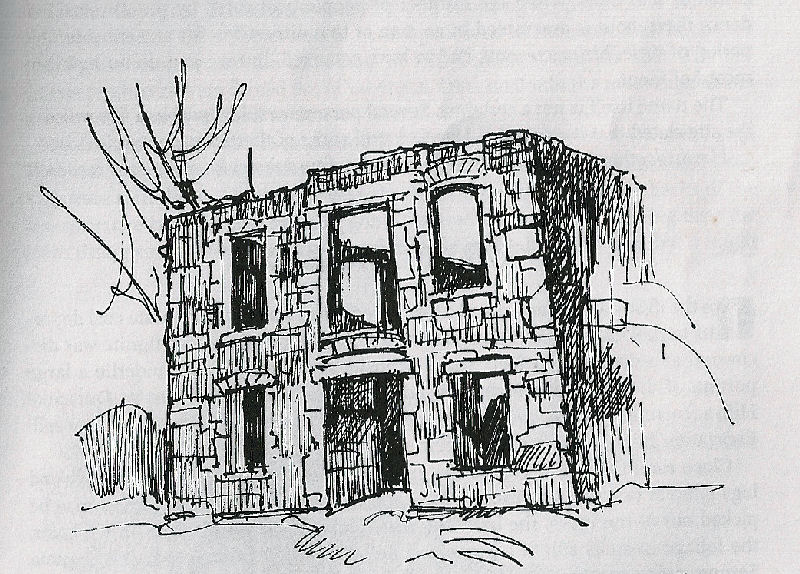





|
|
Live Oak/Oak Grove, Amador County Ghost Town | ||
Until the late 1940's, there stood at a present road and intersection a two-story building, massive in its grey cut stone and exhibiting a fine degree of architecture. Treasure hunters in a stupid search for treasure, have collapsed the upper walls, torn the great second story Boor joists from their keys in the walls, and brought the whole thing down in complete ruin. |
|
|
|
A few scraps of what, by stretching the imagination, can be labeled local tradition assert that this building was once a stagecoach stop. This is so often said about any ruin that is still visible that we may not attach too much importance to it. Here the story could well end except for one fact. In the years 1960 and 1961 the U.S. Geological Survey had a field party in the area doing a topographic map in 1O-foot contours to replace one of prior date showing 50-foot contours only. Four streets that were discovered, faced on each side by the stubs of the walls of great stone buildings. The buildings themselves had been removed from the scene. |
||
|
The count of these, was eighteen. A most thorough job had been accomplished; the wall remnants were at a minimum 6 inches above grade and at a maximum 2 feet. This, of course, was all done by horse power, four-footed, that is. The cost must have been a thing to note. |
||
|
The only possible answer seems to be that since the site is within the boundaries of the Rancho Arroyo Seco, it suffered the fate of Quincy and other settlements. All traces of human occupancy, in as far as is possible to do so, were completely destroyed. Another unanswered question: Why was the two-story structure spared the fate of its neighbors? Let us now attempt an evaluation. It is elemental that a community possessing eighteen edifices of masonry in the downtown area was possessed of a population of some hundreds or thousands and was of some prestige and weight in the affairs of that day. Now to the blank wall. No mention is made of it in the writings of Mason, Doble, Taylor, Borthwick, Robinson, or as far as can be determined, by any other scribe of that time. When the number of people postulated by the physical evidence thereabout is assembled in an area of that dimension for any considerable period of time, historic events had to have occurred, but we just do no have any record of them. The name itself is not a certainty. Several persons resident within a few miles of the site stated that it was called Live Oak and some of them were not quite sure. Here, together with many other puzzles, is a fine subject for additional research. | ||

| ||
|
Information, photographs courtesy of the Amador County Archives, The Historical Marker Database, The Chronicling America Database, and Larry Cenotto, Amador County's Historian CONTACT US
|
||
